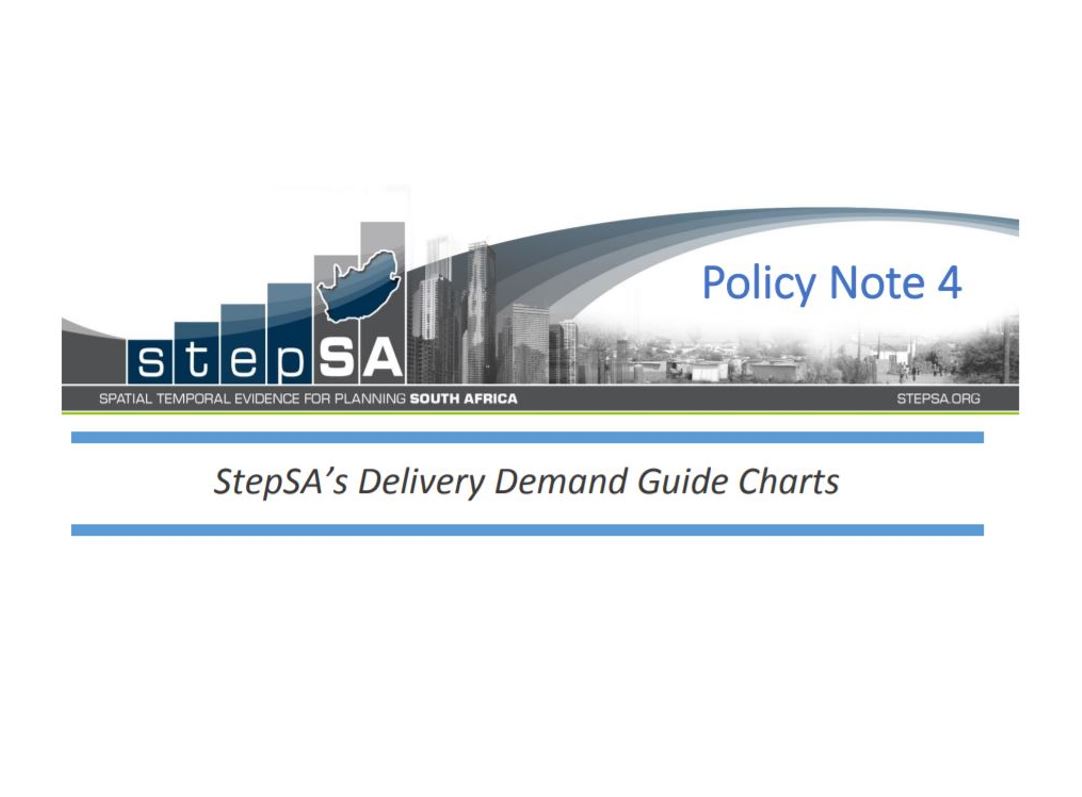StepSA's delivery demand guide charts
Policy Note

01 January 2017
Spatial-Temporal Evidence for Planning
English
Policy brief
Spatial Temporal Evidence for Planning South Africa (stepSA)
Africa
Evidence-based policy is a national priority in light of the intense interest in spatial planning approaches sparked by government’s new national policy slate, including the New Growth Path and the National Development Plan 2030. However, national policy planning is not fully spatialised as yet, and metrication of outcomes indicators is still incomplete. It is becoming clear that spatial data available for national and local planning up to now has been falling short of the demands of fast, effective delivery of government benefits promised to the nation’s marginalized communities.
Spatial datasets – now becoming available in the wake of the NDP’s focus on evidence-based spatial planning – are helping to make policy decisions and their outcomes at household level fully visible as metricated data. Quantitative tracking of household results showed degrees of success for policy interventions and put policy makers in command of their material.This Delivery Demand Charts in wall-poster format is one of StepSA’s technological products for policy and planning.
Abstract based directly on source.


Comments